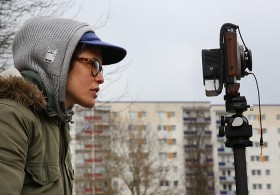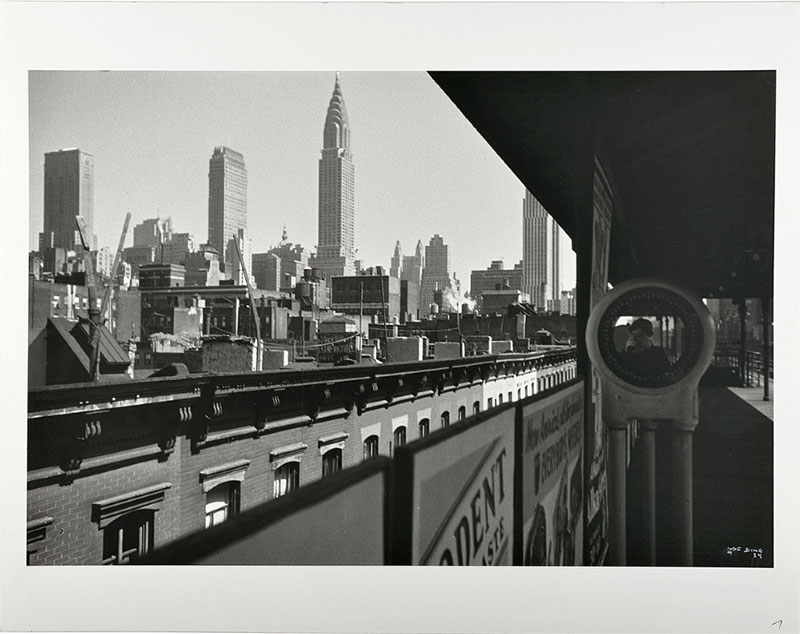
Hadas Tapouchi © Katja Täubert
History cannot be captured in a single form. Not in brass, not in metal. That is what Hadas Tapouchi says. The Berlin-based Israeli artist believes that monuments and inscriptions miss the actual sense of commemoration. This type of remembrance would be an inevitable path towards forgetting.
Undoubtedly, Hadas works against forgetting. Upon our first meeting at her Tel Aviv apartment about four years ago, the artist’s rendered self-portrait in prisoner’s garb immediately jumped out at me. It was one of the precursors to her project, “The Third Generation“. A countless number of portraits since followed – portraits of mutual friends, the author himself, as well as young men and women between Berlin, Tel Aviv and Ramallah. → continue reading
A self-portrait shot by Ilse Bing on her first trip to New York in 1936 has been imprinted on my mind’s eye for a very long time. The image was up for sale only twice in the last twenty years. On the first occasion, in 2009, a vintage print went at auction for the princely sum of 25,000.00 EUR. Given its rarity and great market value, I imagined at the time that the enchanting image was unlikely ever to become a part of our collection. For me, it came to be the very epitome of wishful thinking.

Ilse Bing, “New York—The Elevated and Me,” print from 1988 of the original negative from 1936. Jewish Museum Berlin © Estate of Ilse Bing
The photograph depicts a station on the Elevated (subway line) in New York and the reflection in a small round mirror of the photographer with her Leica. The title “New York—The Elevated and Me” underscores the hybridity here of cityscape and self-portrait.
→ continue reading
The last few weeks have been full of hectic hustle and bustle, with boxes being passed from hand to hand, examined, unpacked, and sorted through. Such a variety of objects emerged from their cases and seemed to be disseminating in every direction through the museum.

© Jewish Museum Berlin, photo: Gelia Eisert
Blue prints were spread out over a long, dark red sheet. Words seemed to glow in them – was it “tekhelet” or “argaman” or both? And what do they mean anyway?

© Jewish Museum Berlin, photo: Gelia Eisert
A “magic” card appeared in a kitchenette. Suddenly everything was kosher: the sink, the refrigerator, the dishes, the whole kitchen. The artist promised it would be, and thus it happened. → continue reading



